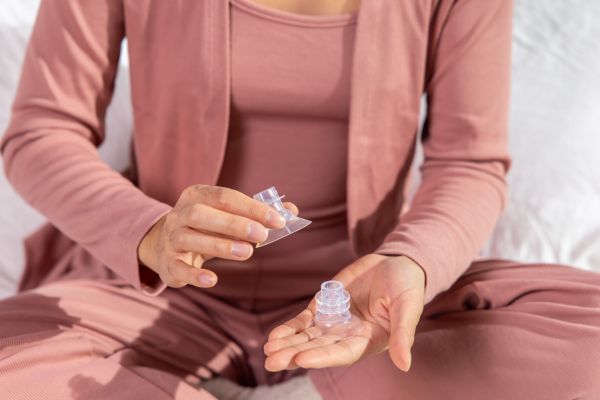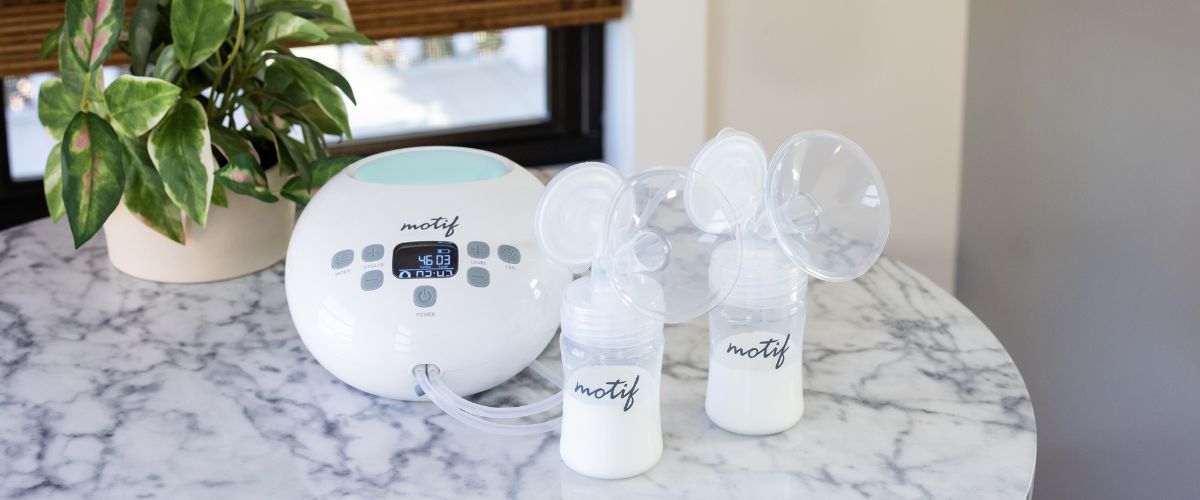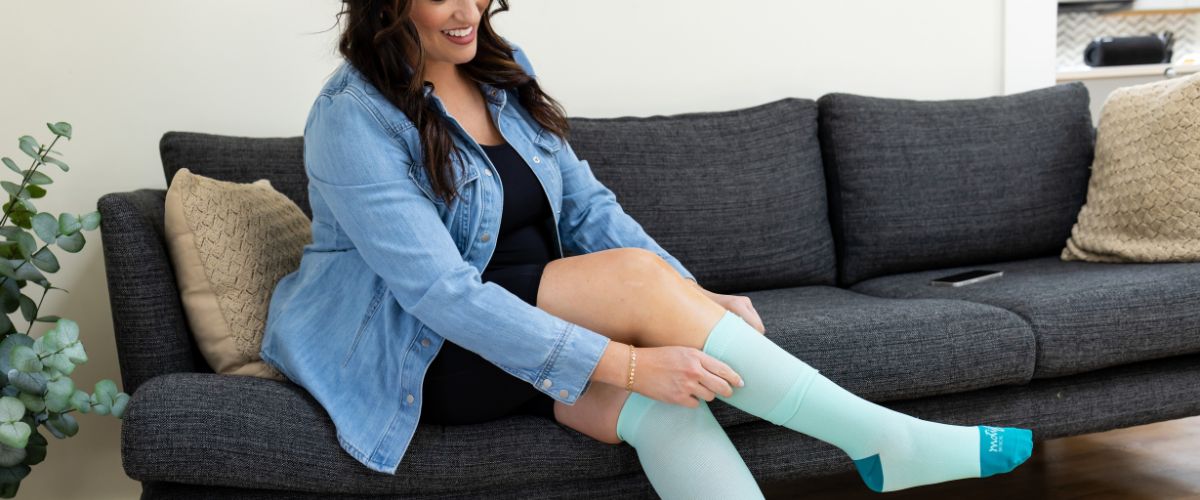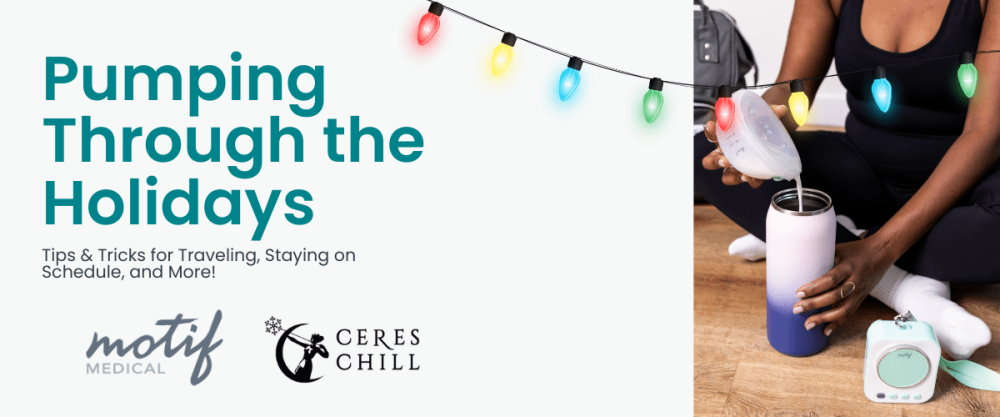What’s The Biggest Myth About Flange Sizing That You Wish You Could Bust?
Want the inside scoop on flange sizing from an IBCLC(International Board Certified Lactation Consultants) perspective? Recently, I teamed up with USLCA’s Jessi Gomez, IBCLC to dive into some of the most frequently asked questions we receive as IBCLCs. Watch our Youtube video to recap the Instagram Live and read the recap of questions asked.
There is SO much information available through social media, mom groups, and through Google searches. While this can be a great thing, it can also be very overwhelming for new parents who are trying to sift through the information onslaught to find out what’s true and what’s not. The myth I want to bust the most is that flange sizing is a neat and tidy algorithm based on measurements alone. In reality, measurements are just a guide. . . a place to start. Getting measurements can be helpful for giving us an idea of where to start with sizing, but we must always also consider mom’s breast and nipple shape, size, and response to pumping.
What are the most common signs that tell us a flange isn’t the right fit?
Without a doubt, the FIRST sign that a flange isn’t the correct size is pain. Pumping shouldn’t be painful! When a mom reports pain with pumping, it’s important to investigate the root cause of that pain. Sometimes, it’s coming from nipple damage caused by a poor latch, using excessive pump suction, or even an infection of the nipple tissue. However, pain with pumping is most often caused by a poorly fitted flange. Additional signs of a poor fit include excessive nipple swelling, discoloration of the nipple or areola, poor milk expression, and leaking on the underside of the flange.
How Do You Assess Flange Fit During a Consultation?
I like to start the flange fit assessment with an evaluation of mom’s nipple and breast tissue before pumping. I take note of the shape, size, elasticity, and any nipple damage. It’s important to get a thorough history of what breastfeeding has looked like so far. I’ll also measure different aspects of mom’s nipples, in millimeters, using a nipple ruler. I like to recommend at least three sizes (and possibly different shapes) of flanges for mom to try and observe how her tissue responds as she does a pumping trial with each one. I’m looking for a flange that produces sprays of milk and is comfortable. Once we narrow it down to the best fit, I recommend that mom continue pumping with that size for several sessions and report back about her experience. It’s important to get this feedback after mom goes home and has more opportunities to try the new size across several days. Based on her feedback, we’ll make necessary adjustments until we land on the size that is most comfortable and yields the most breast milk.
In my experience, moms typically get the best results by using a flange that is closely fitted to their nipple size, allows only the nipple to enter the flange tunnel, and triggers letdown within the first 30-90 seconds of pumping. However, there are always outliers in every situation. I have also worked with moms who found the most comfort and milk output using a flange size that bucked the trend… that’s why it’s important to try MULTIPLE sizes.
How does nipple size change throughout the pumping journey?
During pregnancy, it is normal for your nipples to become a bit larger and more erect due to hormonal changes. After birth, your milk will change from colostrum to transitional milk and finally to mature milk. It is not uncommon for moms to experience engorgement when milk “comes in”. This process can result in nipple size changes, especially in the first two weeks postpartum. Many moms experience a slight decrease in nipple size after two weeks postpartum. As milk supply increases, however, nipple size can change again. Many moms also experience nipple size changes any time their babies’ feeding patterns change, such as having longer sleep stretches or starting solids. Additionally, if a mom’s period returns while breastfeeding, she may experience temporary nipple size changes during ovulation or during her period. The best way to manage these changes is to reassess flange size any time pumping becomes uncomfortable.
What long-term issues can develop from using the wrong flange size consistently?
Using the wrong flange size doesn’t just cause pain in the moment; it can also cause long-term problems. You have likely heard that milk supply is driven by supply and demand. This means that frequent and effective milk removal is essential for building and maintaining milk supply. Using the wrong flange size can reduce the amount of milk removed when pumping, and this can result in an overall reduction in milk supply over time. On the flip side, pumping with a well-fitted flange maximizes your pumping efforts and helps protect your milk production. Another potential long-term complication is nipple trauma. Using a flange that causes swelling, pain, discoloration, rubbing, or other types of nipple damage can lead to significant nipple tissue trauma over time.
As an IBCLC, How Has Having Access to Multiple Flange Sizes Changed Your Practice?
How do you help moms feel confident about making flange size adjustments on their own?
It is SO important to empower moms to listen to and respond to what their bodies are telling them! I love to help my patients identify the signs and symptoms of a flange fit problem and give them guidance for making adjustments on their own. This is accomplished by sharing the framework for flange sizing with parents and giving them anticipatory guidance regarding the possible next steps.
As an IBCLC, I’m here if they have questions along the way, but I want them to feel comfortable identifying potential flange sizing red flags so they can trial other sizes if needed.
What Does The Current Research Say About Flange Sizing?
Unfortunately, we just don’t have as much information as we’d like to have when it comes to flange sizing. The few studies we have are small or very limited. Large, randomized controlled trials are needed to make big changes within lactation practice. The great news is that IBCLCs have been tracking the trends they see in their own practices. Clinical experience, combined with the limited research we do have, reinforces the importance of trialing multiple sizes (and shapes) of flanges in order to find the one that is the most comfortable and yields the most milk. It’s my hope that bigger, better research projects are on the horizon and that they might give us insight into topics like silicone flange inserts versus hard flanges, how pump settings impact milk output and pumping comfort, and more info on how hormonal changes impact nipple size throughout breastfeeding.
Where can I get different flange sizes to try?
If you’re already a Motif Aura Glow user, a Motif Roam user, or a Motif Collection Cups user, then you’re a step ahead! These top-rated pumping products each come with five flange sizing options right in the box. If you’re still searching for that Goldie-Locks fit, check out the wide range of flange inserts and hard flanges available as well. Did you know you could get your breast pump and certain pumping accessories through insurance? Our easy-to-use Insurance Lookup Tool is the place to start. No matter where you are in your journey, having the right equipment is essential for moving toward your goals. Motif’s award-winning line of breast pumps and accessories can help you stay on track.


Information provided in blogs should not be used as a substitute for medical care or consultation.









